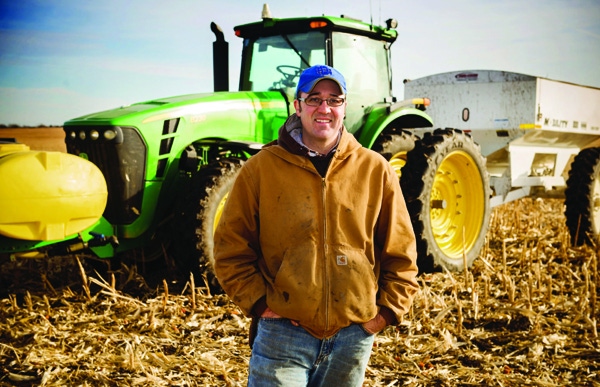
Think differentFor Keith Alverson, thinking outside the box about climate change got a jump-start when he worked with other farmers, academics and conservationists on a special report, “Agriculture and Forestry in a Changing Climate: Adaptation Recommendations,” spearheaded by the 25X’25 Alliance. “We do not know the causes of climate change,” he says. “But we have to deal with climate change to maintain our livelihood as food, fuel, feed and fiber producers.”
March 14, 2014

Although each of the past half-dozen years has presented unique weather challenges for Keith Alverson, the 2012 crop year captured the extremes like few others.
The year started with a spring of drown-outs and replants, and finished with a hot, dry fall that had Alverson, his father Ron, and uncle Larry, harvesting 20% moisture corn in early September, a month ahead of normal on their eastern South Dakota farm.
“Drought isn’t uncommon in South Dakota, but to go from one extreme to the other is unusual,” says Alverson, Chester, S.D. “In recent years, it seems like weather swings one way or the other. My dad, uncle and grandfather haven’t seen this kind of thing before.”
Reduce weather risks
As weather extremes become more common, the Alversons have taken steps to protect their farm’s productive capacity. They’ve added drainage tile, plus irrigation on fields with lighter soils. They’ve also retooled their equipment lineup for quicker planting.
Instead of full-pattern tiling, the Alversons have tiled low spots on heavy soils. Some quarter sections get by with 4,000-5,000 feet of tile, which keeps costs down compared to pattern tiling, says Alverson, vice president of the South Dakota Corn Growers Association and a NCGA board member.
“Generally, those areas are the most productive part of the field,” he says. “Normally we could farm them, but we would have lost yield two or three years out of five. We have seen a two- to five-year payback on tile in those areas.”
Like much of eastern South Dakota, irrigation isn’t justified on most of their 2,500 acres, says Alverson. “On the bulk of our farm, irrigation might be worth 10 bushels per acre – if we could find groundwater,” he says.
Their 700 irrigated acres are concentrated on light glacial outwash soils, where irrigation can boost average yields about 40% to 200 bushels per acre. They’ve kept development costs down in some cases by buying used center-pivot irrigation rigs.
The Alversons changed their equipment lineup after Keith joined the operation in 2002 following college. Instead of a single larger planter, they now have three identical 12-row planters, plus cultivators for their ridge-till system. “Our system is keyed to being timely and working with weather windows,” says Alverson.
About the Author(s)
You May Also Like





